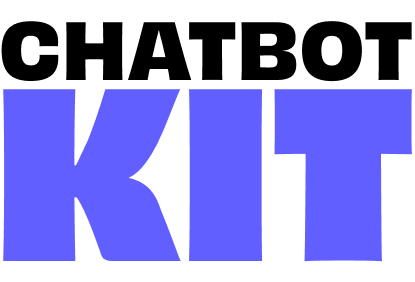

Text to Speech
Generate natural-sounding speech audio from text using AI voice synthesis, designed to work seamlessly with your chatbot applications.
What it is
The Text to Speech system provides:
- AI voice synthesis that converts text to natural-sounding audio
- Rate limiting protection to manage API usage and costs
- Scenario-based voice selection for different chatbot personalities
- Binary audio responses ready for immediate playback
- Flexible TTS provider integration supporting multiple AI voice services
How to use it
API Endpoint
Send POST requests to your TTS webhook URL with:
{ "text": "Hello! Welcome to our service. How can I help you today?", "scenario": "customer-service" }
Response
Receive binary audio data (typically WAV or MP3) ready for playback in your application.
How it works
- Rate Limiting - Verifies the user hasn't exceeded TTS usage limits
- Text Processing - Receives text and scenario parameters
- Voice Synthesis - Generates audio using the configured TTS provider
- Audio Delivery - Returns binary audio data for immediate use
Workflow Architecture
The TTS system consists of three interconnected workflows:
TTS (Main API Route)
- Purpose: Public API endpoint called by your chatbot applications
- Function: Handles incoming requests with rate limiting and routing
- Usage: Integrated with ChatbotKit AI engine for seamless voice responses
TTS-Call (Core Processing)
- Purpose: Subworkflow responsible for actual voice synthesis
- Function: Interfaces with TTS providers and manages audio generation
- Customization: Replace OpenAI TTS with providers like ElevenLabs, Azure Speech, or others
TTS-Manual (Development & Testing)
- Purpose: Manual trigger for testing and development
- Function: Generate TTS audio directly in n8n interface
- Usage: Download generated audio files for testing or batch processing
Voice Customization
TTS Provider Options
The system supports multiple voice synthesis providers:
- OpenAI TTS (default) - Natural voices with good quality and speed
- ElevenLabs - Premium voice cloning and custom voice creation
- Azure Speech Services - Enterprise-grade with extensive language support
- Google Cloud TTS - Multilingual with WaveNet neural voices
- Amazon Polly - Cost-effective with neural and standard voices
Switching TTS Providers
To change from OpenAI to another provider:
- Configure Credentials - Add your new provider's API keys in n8n
- Update TTS-Call Workflow - Modify the API call nodes to use your preferred service
- Adjust Parameters - Configure voice selection, speed, and quality settings
- Test Integration - Use TTS-Manual workflow to verify voice output
Voice Configuration
Customize voice characteristics:
- Voice Selection - Choose different voices per scenario
- Speech Rate - Adjust speaking speed for different contexts
- Pitch Control - Modify voice pitch for personality matching
- Audio Format - Select output format (MP3, WAV, OGG)
- Quality Settings - Balance between audio quality and file size
Integration with Chat System
- Automatic Triggering - Chat responses automatically generate TTS audio
- Scenario Matching - Voice characteristics match chatbot personality
- Session Continuity - Consistent voice throughout conversation
- Performance Optimization - Cached audio for repeated responses
Rate Limiting
- Usage Protection - Prevents excessive TTS API costs
- Per-IP Limits - Controls individual user consumption
- Error Responses - Clear feedback when limits exceeded
- Cost Management - Helps maintain predictable TTS expenses
Best Practices
- Text Optimization - Clean text of special characters and formatting
- Length Management - Break long texts into shorter segments
- Voice Testing - Use TTS-Manual to test different voices and settings
- Provider Comparison - Evaluate different TTS services for your use case
- Caching Strategy - Store frequently used audio to reduce API calls
- Error Handling - Implement fallbacks for TTS service failures
Development Workflow
- Use TTS-Manual for initial voice testing and configuration
- Configure TTS-Call with your preferred provider and settings
- Test via TTS endpoint to verify integration with your applications
- Monitor usage through rate limiting logs and provider dashboards
The TTS system provides a complete voice synthesis solution that integrates seamlessly with your chatbot infrastructure while maintaining flexibility for different voice providers and customization needs.